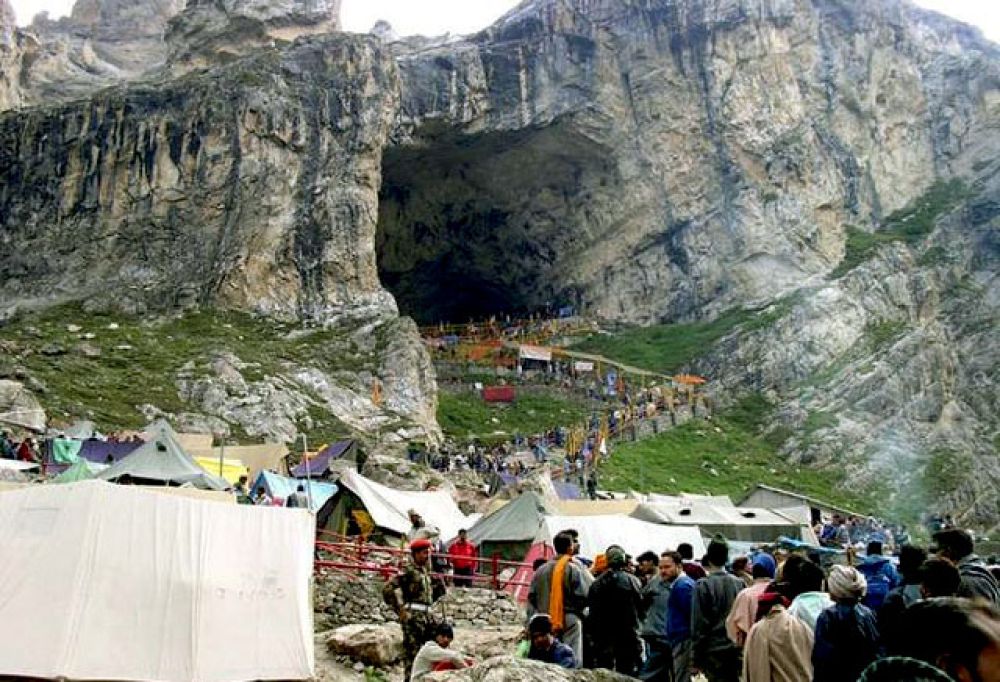

The Amarnath Cave Temple is a sacred site in Kashmir, India, dedicated to Lord Shiva. One of the most important pilgrimages in Hinduism, the Amarnath Yatra, leads to this cave temple located at an altitude of 3,888 meters (12,756 feet) above sea level. The temple is famous for the natural formation of an ice stalagmite that resembles the Shivalinga, which waxes and wanes with the moon.
According to Hindu mythology, this is the cave where Lord Shiva explained the secret of life and eternity to his consort, Goddess Parvati. The cave was said to be discovered by a shepherd named Buta Malik in the 15th century, and this ancient site has been a pilgrimage center since. However, the pilgrimage to Amarnath is an ancient practice, with references found in texts that date back to several hundred years.
Previously accessible only by foot and through strenuous hikes across challenging terrain, the pilgrimage to the Amarnath Cave Temple now includes helicopter services from nearby towns like Pahalgam. The best time to visit the shrine is between the months of July and August during the Shravan Mela festival, coinciding with the Shravan month in the Hindu calendar when the Shivalinga reaches its full size.
The Amarnath Yatra has been a significant pilgrimage, attracting thousands of devotees annually. Over the centuries, the Yatra has become an integral part of Kashmir's history, culture, and identity. In the early days, it was a treacherous journey with minimal facilities. However, over the years, the state government and various religious organizations have worked to make this pilgrimage safer and more accessible.
With the advent of technology and tourism infrastructure, the Amarnath Cave Temple pilgrimage has become more organized. There are now pre-registered passes, better accommodation options, medical camps, and secure travel arrangements. The pilgrimage has also seen an increase in helicopter services, which has made the holy site accessible to a broader demographic, including the elderly and those unable to undertake the arduous trek.
The introduction of virtual darshan services is also a notable trend, allowing devotees who are unable to undertake the journey to receive the blessings of Lord Shiva. Despite the challenges posed by natural elements and regional politics, the annual pilgrimage to the Amarnath Cave Temple continues to grow in numbers, with each year seeing a further surge in pilgrims from across the world.
While tourism to the Amarnath Cave Temple boosts the local economy and infrastructure development, it also raises concerns about environmental degradation and cultural sustainability. The authorities are continually working on measures to balance the religious importance of the pilgrimage with the conservation of the fragile Himalayan ecology.
Efforts are being made to promote responsible tourism practices among the pilgrims to preserve the sanctity and beauty of the Amarnath Cave Temple for future generations.